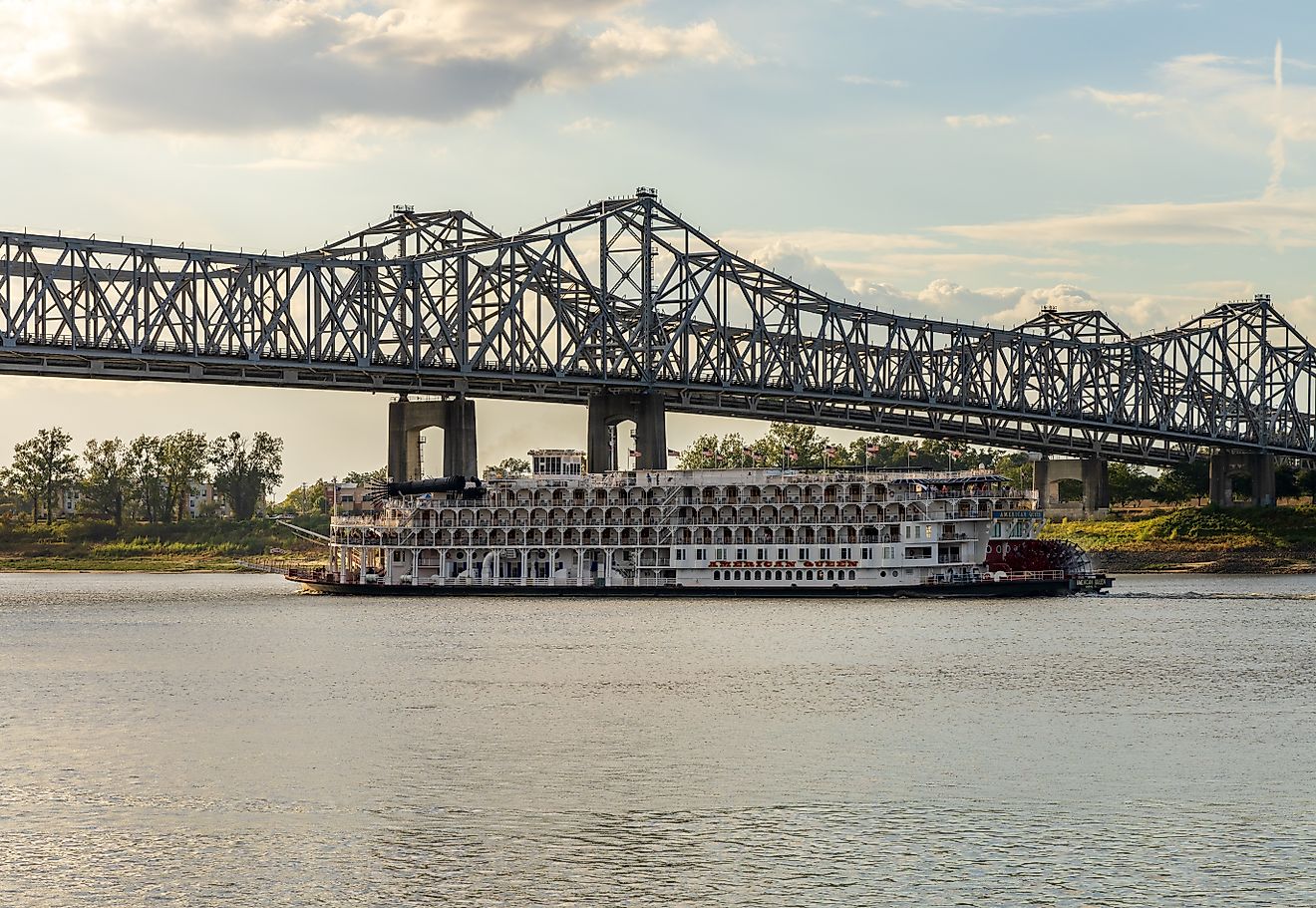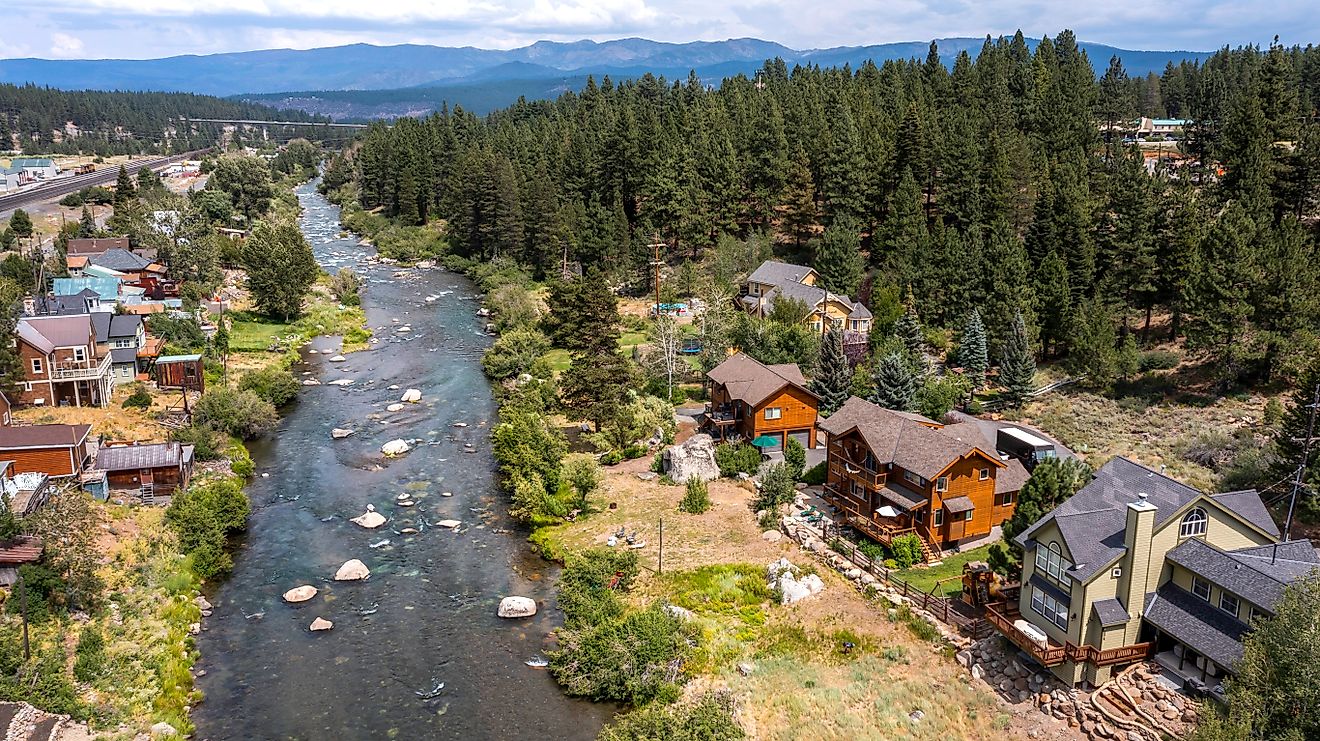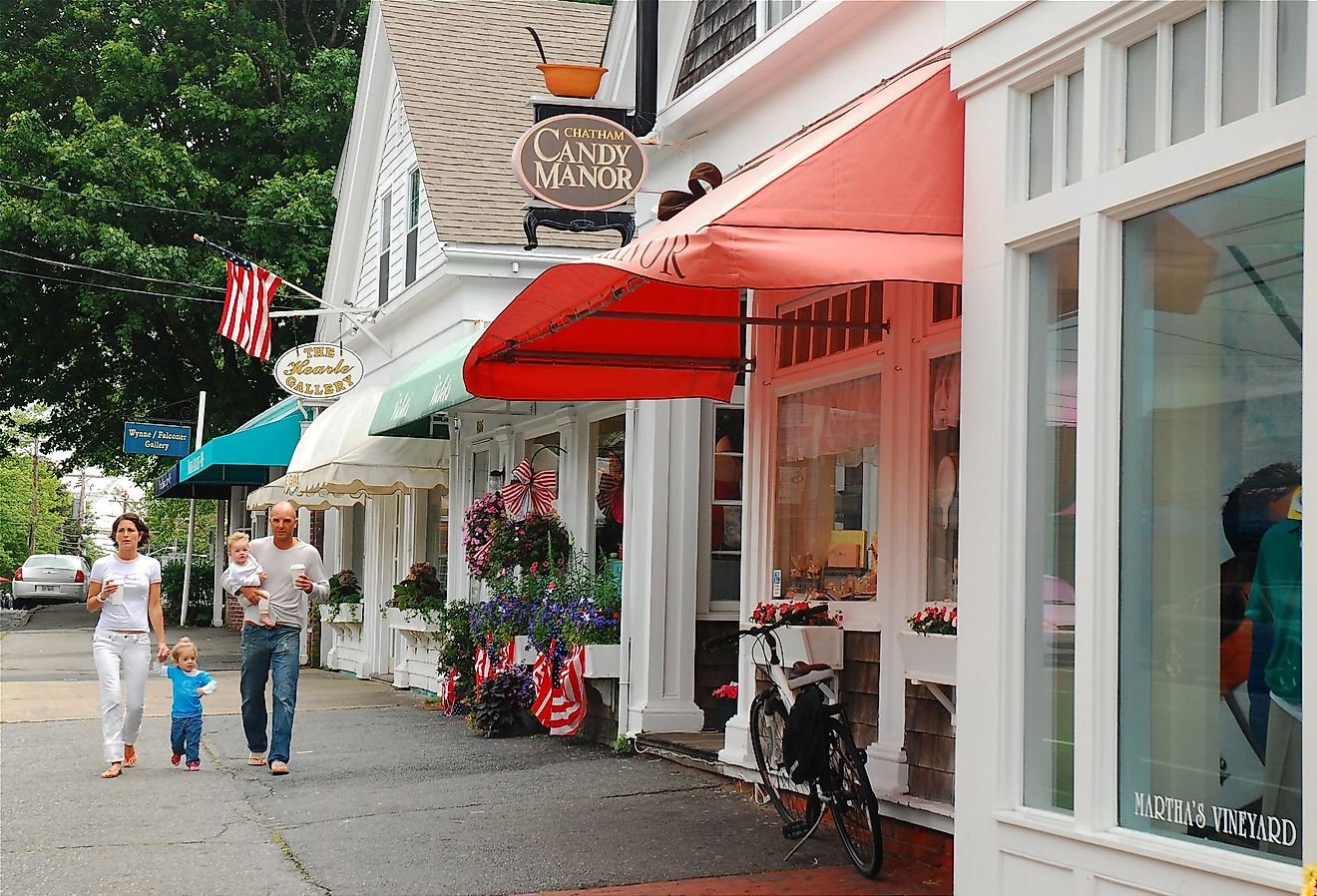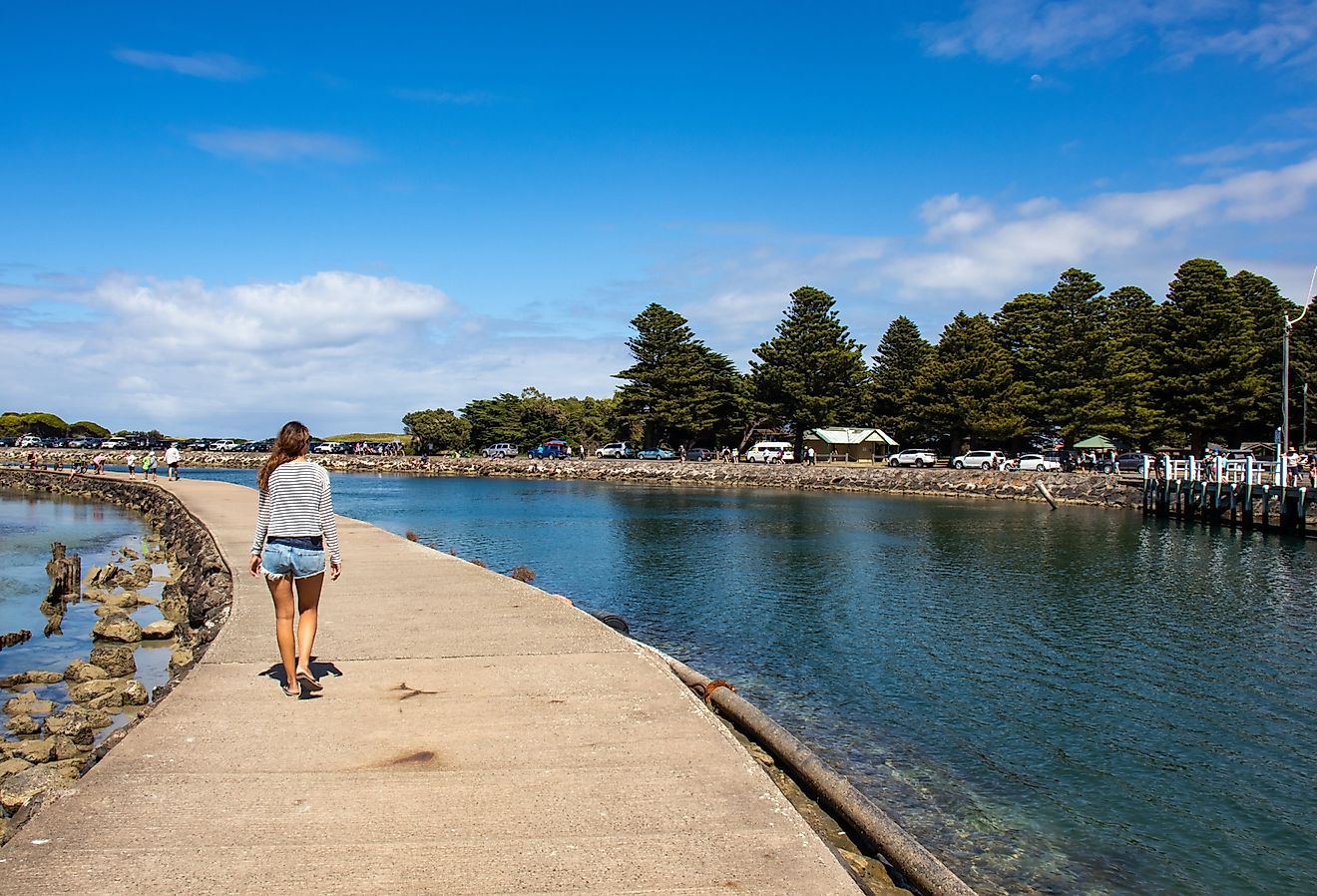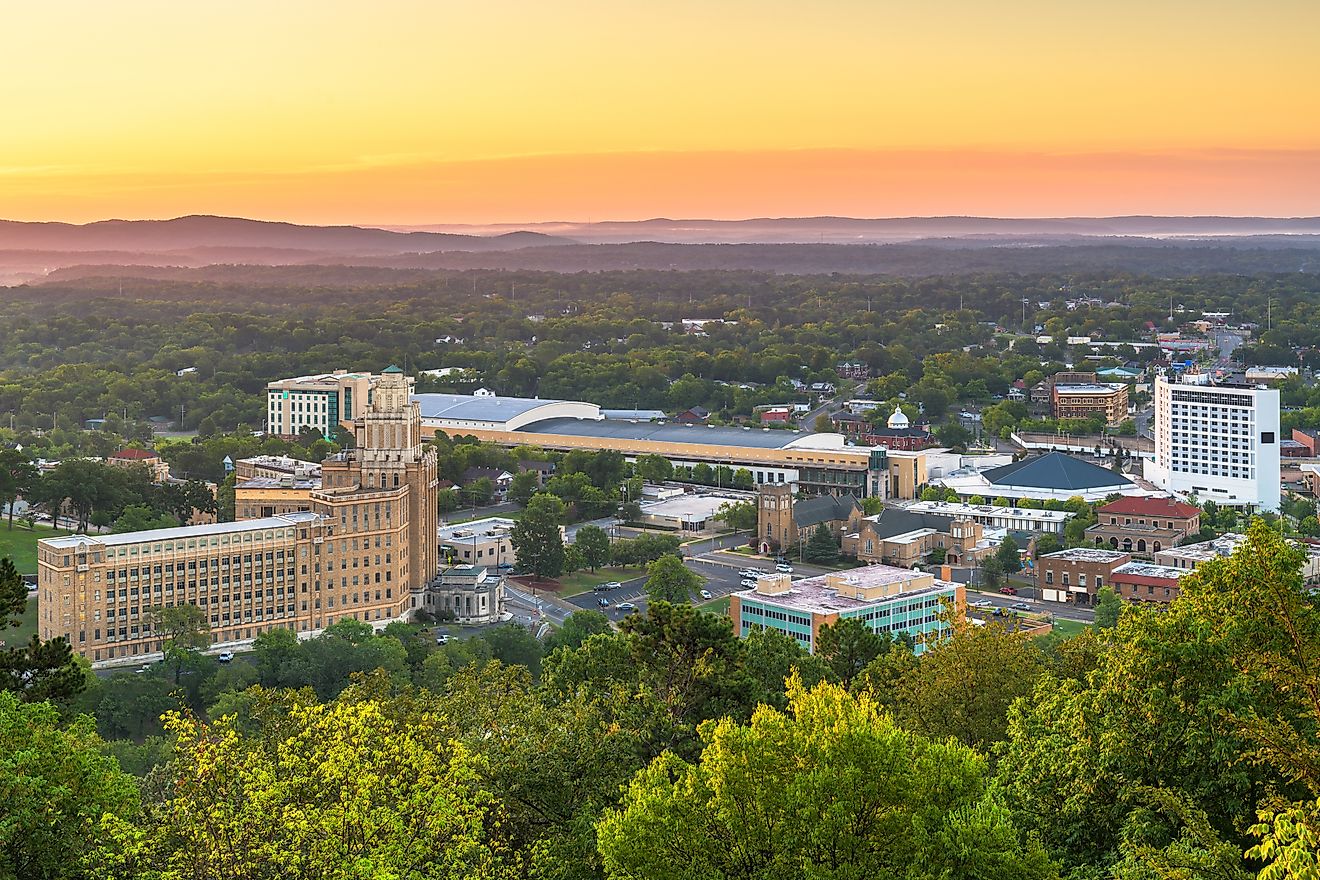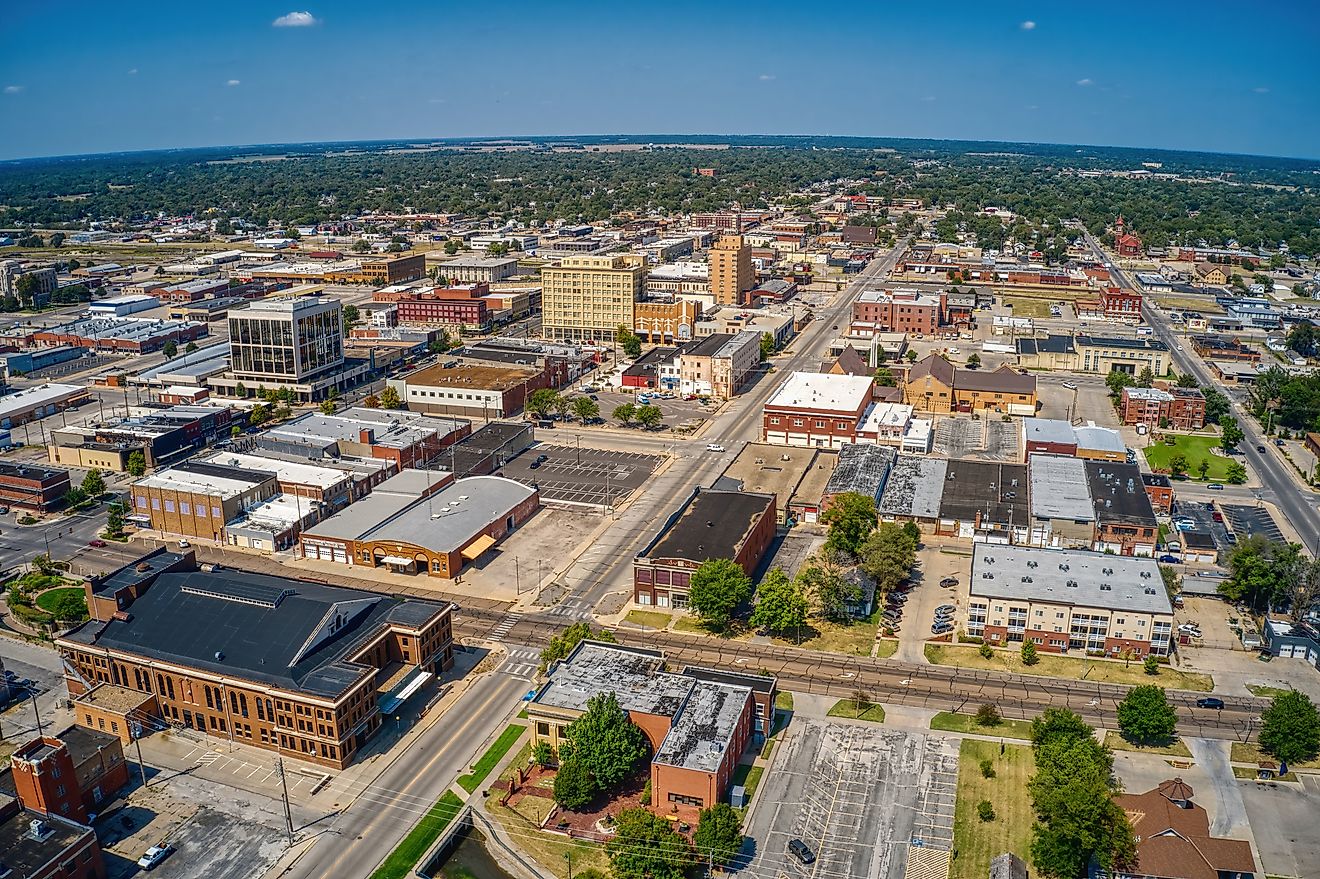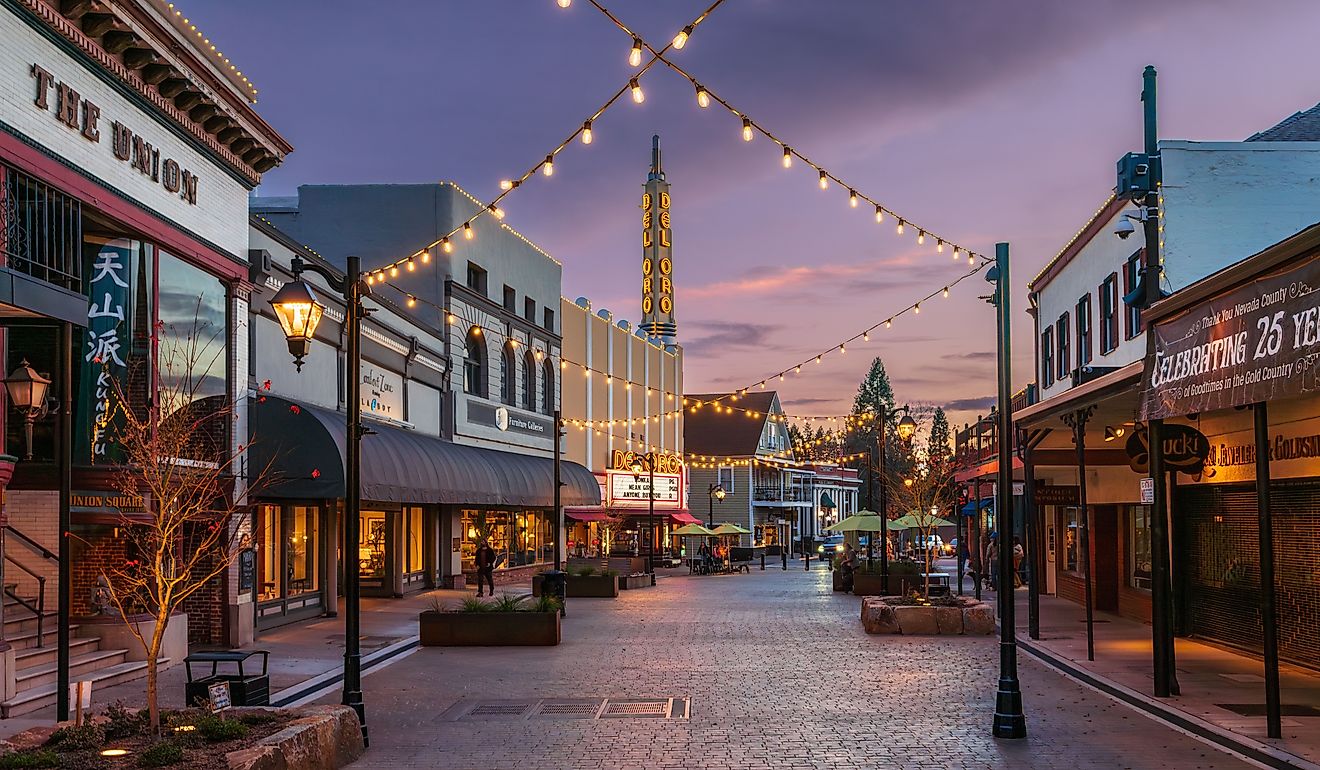
8 Most Idyllic Small Towns in Oklahoma
Oklahoma, located in the south-central region of the United States, has diverse landscapes that range from prairie, forests, and mountain ranges to arid plains. Its capital and largest city, Oklahoma City, is at the heart of its economic activities, which include sectors like oil, natural gas, and agriculture, particularly wheat production. The state is also known for its significant Native American history and is home to the headquarters of 39 tribal nations.
The state is dotted with idyllic small towns that epitomize rural America and are a peaceful retreat from the urban hustle. These eight towns are appreciated for their historical narratives, preserved through architecture and local museums, and their natural beauty, including rivers, lakes, and mountain parks.
Guthrie
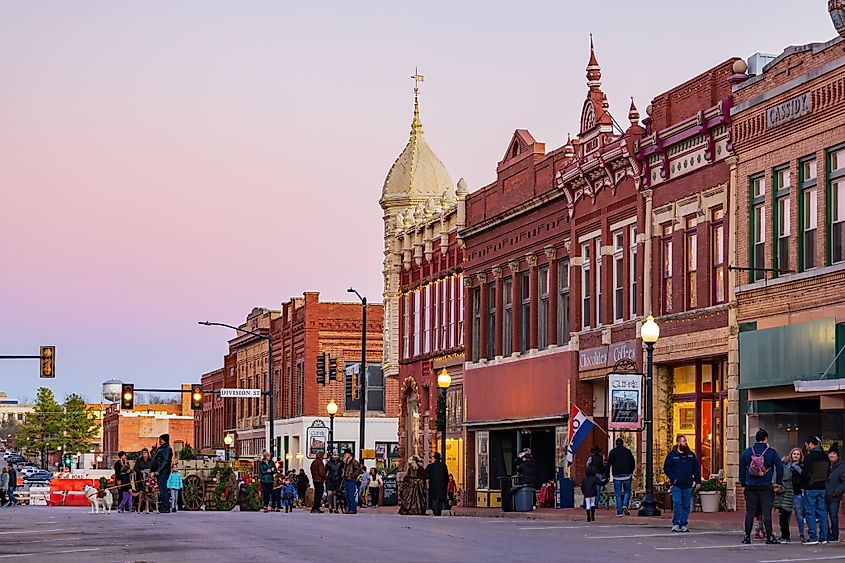
Guthrie, Oklahoma, established during the Land Run of 1889, rapidly grew from a prairie into an urban center almost overnight, initially serving as the territorial and later the first state capital of Oklahoma. The town's collection of late 19th and early 20th-century commercial architecture, largely preserved in its original form, earned it a National Historic Landmark designation.
The Oklahoma Frontier Drug Store Museum looks at the life and challenges of frontier-era pharmacists. The museum has a collection of drugstore artifacts, including medicines, equipment, and documents. The Pollard Theatre is known for producing a diverse range of plays and performances, from classic dramas to modern musicals, contributing to the local arts scene. It is set in a historic building and offers year-round entertainment. Lastly, the Guthrie Scottish Rite is one of the most architecturally significant buildings in the area. This Masonic temple has guided tours to see its auditorium, murals, and craftsmanship.
Medicine Park
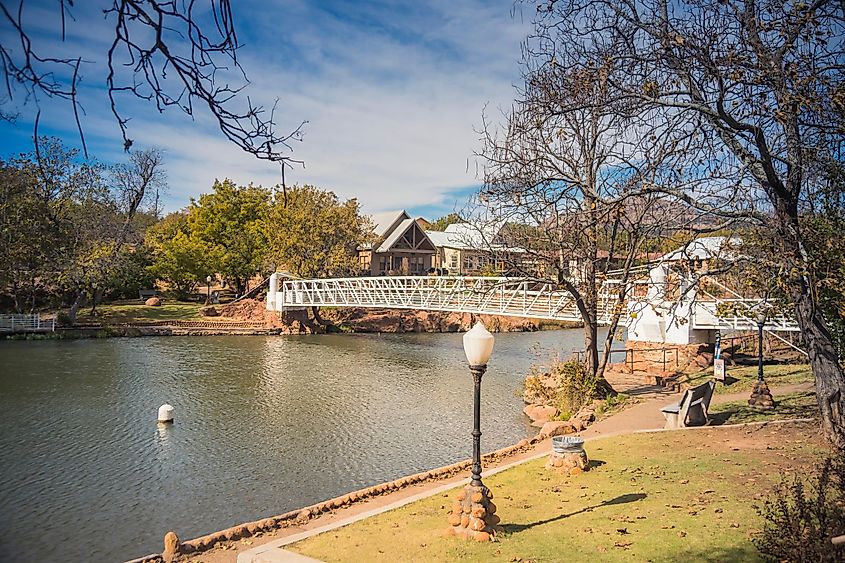
Medicine Park, established in 1908, is a small town in the Wichita Mountains. Known for its cobblestone-lined streets and early 20th-century architecture, the town was originally founded as a resort community. Medicine Park was the first planned tourism resort in Oklahoma and quickly became a destination for state politicians, celebrities, and outlaws during the early 1900s.
Bath Lake Medicine Park is the town's centerpiece, a natural swimming hole known for its cool, clear waters that are particularly refreshing during summer. The area around the lake is beautifully landscaped with picnic spots, walking trails, and bridge viewpoints. The Old Plantation Restaurant is a dining experience in a historic building that dates back to the town's early days. The restaurant serves a variety of dishes in an atmosphere that captures the rustic spirit of old Medicine Park. Lastly, the Wichita Mountains Wildlife Refuge has hiking trails and rugged terrain. The refuge is home to American bison, Texas longhorn cattle, elk, and a variety of birds.
Eufaula
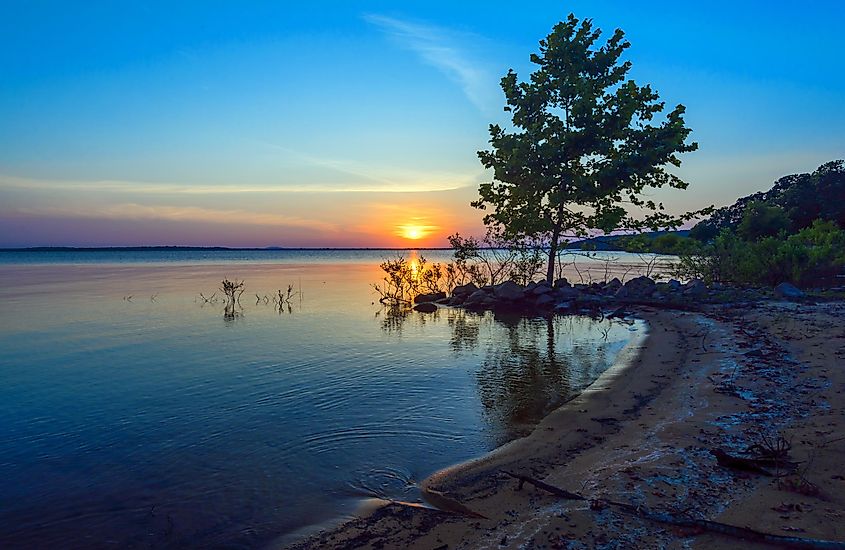
Eufaula, Oklahoma, is named after the Eufaula tribe, part of the Muscogee (Creek) Nation. The town was established in 1872 during the expansion of the Missouri-Kansas-Texas Railroad. Eufaula is located adjacent to Lake Eufaula, Oklahoma's largest lake, which was formed by damming the Canadian River in 1964.
Lake Eufaula provides ample opportunities for boating, fishing, and swimming, with numerous access points, marinas, and public beaches. The lake's diverse fish populations make it a haven for anglers seeking bass, catfish, and crappie. For cultural experiences, the Eufaula Indian Community Center educates visitors on the rich heritage and ongoing traditions of the local Native American community.
Broken Bow
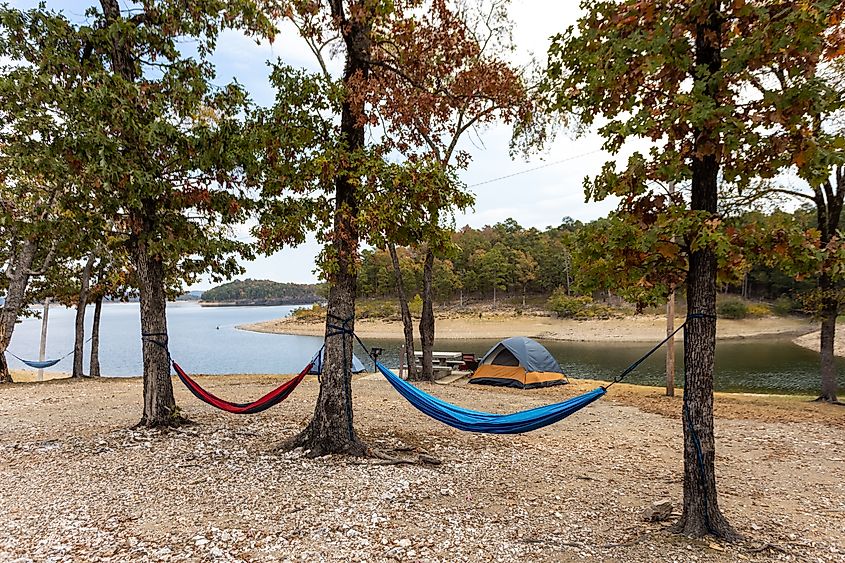
Broken Bow, Oklahoma, is known for its forestry and rich Native American history. The town is part of the region traditionally inhabited by the Choctaw Nation. It is named after Broken Bow, Nebraska, by the Dierks brothers, a family of businessmen who established a lumber mill that became the foundation of Broken Bow's economy.
Beavers Bend State Park has an array of recreational activities. Guests can enjoy hiking through the forest, fishing in the waters of the Mountain Fork River, boating on Broken Bow Lake, and staying in one of the park’s cabins or campsites. Hochatown State Park, located north of Broken Bow Lake, has additional opportunities, including hiking, fishing, and golfing. For those interested in the local craft scene, Mountain Fork Brewery is a chance to relax and enjoy handcrafted beers made with fresh, local ingredients. The brewery also offers a menu of hearty meals and a welcoming atmosphere.
Arcadia
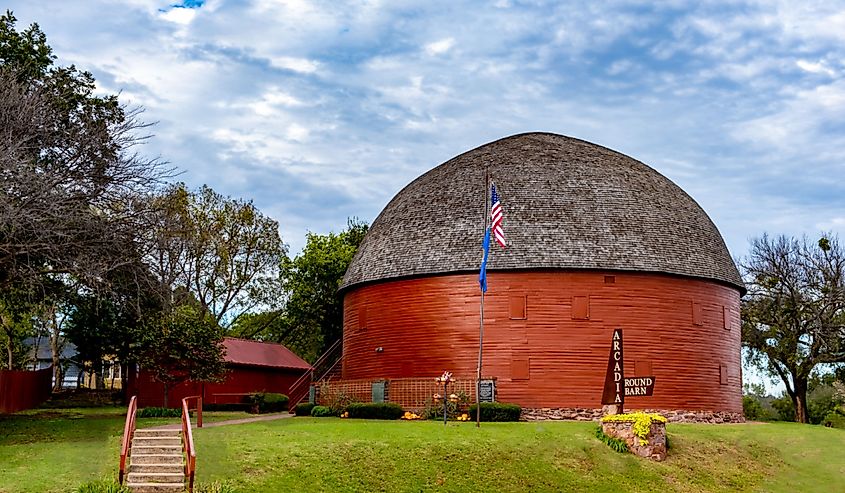
Arcadia is a small town located just northeast of Oklahoma City along the famous Route 66. Established in the early 1900s, Arcadia quickly became a bustling community due to its location on Mother Road, attracting travelers and entrepreneurs alike. The town is noted for its rural landscapes and historic sites that harken back to the early days of the American Midwest.
The Arcadia Round Barn is not only a marvel of architectural design but also a museum and a venue for local gatherings and music events. Its circular shape and historical exhibits look at the barn's role in the community throughout the 20th century. Additionally, Arcadia Lake is for outdoor recreation, from fishing and boating to camping along its shores. The lake is a favorite among locals and tourists for its setting and water activities.
Claremore
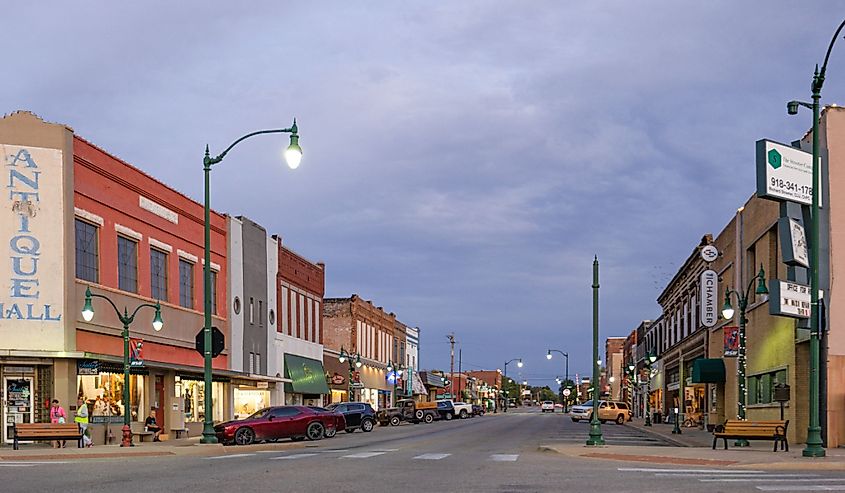
Claremore is named after the Osage chief "Gra-moi" and was officially established in 1883. It quickly became a place for settlers and travelers due to its position along the Missouri, Kansas, and Texas Railway. The discovery of the Radium Water Bath House in the early 1900s transformed Claremore into a resort destination, attracting visitors nationwide seeking the therapeutic benefits of its mineral waters.
The Will Rogers Memorial Museum educates guests on the life and times of Will Rogers through artifacts, memorabilia, and multimedia exhibits. The museum also has views of the surrounding area and hosts events that celebrate Will Rogers' legacy. The JM Davis Arms & Historical Museum is another must-visit attraction, housing over 20,000 firearms and thousands of artifacts, including antique firearms, military weapons, and unusual guns. For outdoor recreation, Claremore Lake is ideal for fishing, boating, and picnicking. The lake area includes facilities such as boat ramps, fishing docks, and walking trails.
Pauls Valley
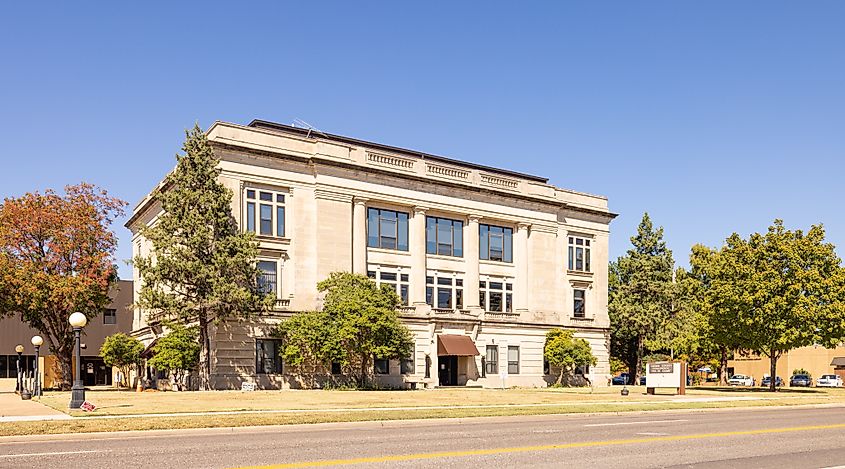
Pauls Valley, Oklahoma, was officially founded in the mid-19th century and named after Smith Paul, an early settler whose cabin was the original post office. The town grew around the stagecoach route between Texas and Kansas. The arrival of the Santa Fe Railroad in the late 1800s transformed Pauls Valley into an agricultural center, boosting its growth and economic development.
The Toy and Action Figure Museum is a one-of-a-kind destination that appeals to all ages. Featuring over 13,000 action figures, the museum celebrates the art and nostalgia of toy collecting and has interactive displays. The Royal Twin Theatre is a slice of cinematic history; this local movie theater has a cozy, retro-style environment to catch the latest films. Additionally, the Santa Fe Depot Museum, located in a restored railroad depot, dives deep into the local history with artifacts and exhibits that tell the story of Pauls Valley’s development.
Sulphur
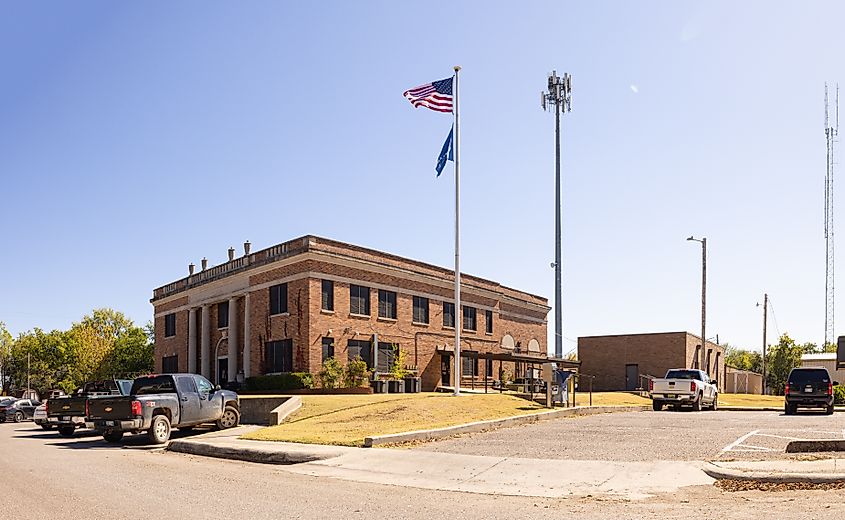
Sulphur is deeply connected to the Native American heritage of the area. Located in the Arbuckle Mountains, Sulphur is named after the mineral springs that flow in the area, which have been revered for their healing properties. The establishment of the Platt National Park in 1906, now part of the Chickasaw National Recreation Area, marked Sulphur as a destination for health tourism and recreation early in its history.
The Chickasaw National Recreation Area has a diverse landscape of water features—from springs to lakes—and a network of hiking trails that meander through the area's flora and fauna. The Chickasaw Cultural Center is another must-visit location; this facility looks at Chickasaw's history and culture through interactive exhibits, a recreated traditional village, a sky pavilion, and an art gallery. It's a place where visitors can immerse themselves in the traditions and artistic expressions of the Chickasaw people. Lastly, Veterans Lake is for more laid-back outdoor activities such as fishing, picnicking, and leisurely walks.
Oklahoma's idyllic small towns should be on your bucket list. Guthrie, with its impressive collection of late 19th and early 20th-century architecture, is a glimpse into Oklahoma's early statehood, while Medicine Park's cobblestone-lined streets and proximity to natural attractions like the Wichita Mountains create a serene retreat. Eufaula, nestled beside Oklahoma's largest lake, combines natural beauty with a rich Native American heritage, making it a favorite. These eight towns, among others, showcase Oklahoma's blend of historical significance and scenery.
